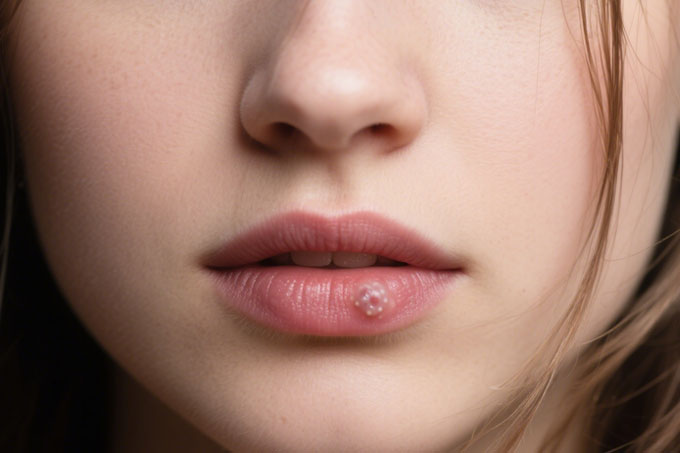Living with eczema feels like your skin’s throwing a never-ending tantrum—itchy, red, and stubborn as a toddler in a candy aisle. You’re not alone; over 31 million Americans wrestle with this chronic condition, scraping by with creams and hopes for clear days. But here’s the heartbreaker: too many folks chase quick fixes based on old wives’ tales or viral TikToks, only to end up scratching more than they soothe. As a new wave of treatments hits the scene—like injectables that actually quiet the chaos—it’s time to cut through the noise. We’re diving into the biggest misconceptions about eczema care, backed by what the experts really say, and arming you with precautions that could turn the tide on your flares. Because managing this beast shouldn’t feel like guesswork; it should feel like a hug from someone who gets it.
Let’s start with the whopper that trips up so many: “Eczema’s just dry skin—slather on lotion and call it a day.” Oh, if only. Sure, dryness is part of the puzzle, but eczema (or atopic dermatitis, if we’re getting fancy) is an immune system glitch where your skin barrier goes rogue, letting irritants crash the party and sparking inflammation. Studies show moisturizers are MVPs for locking in hydration and cutting flare risks by up to 50%, but they’re no solo act. Skipping the doc-prescribed meds? That’s like mopping the floor during a flood—temporary relief, then splash. One celeb mom, Danielle Jonas, shared how she ditched the “lotion-only” myth after painful flares; teaming up with her dermatologist for targeted topicals finally let her rock out without the rash.
Another gut-punch myth: “Eczema’s contagious—keep your distance.” Cue the awkward family reunions. Truth bomb? It’s not catching; you can’t “give” it like a cold. It’s genetic and environmental, often linked to allergies or asthma in the “atopic march.” This one’s especially tough on kids, who might feel like outcasts at school. But knowing it’s not your fault—or theirs—frees up energy for what matters: building that skin shield.
Then there’s the heartbreak of “It’s curable—just find the magic trigger.” Parents pore over food diaries, convinced it’s dairy or dust mites pulling the strings. While allergies can worsen flares (food ones in about 30% of severe cases), eczema’s no simple puzzle; it’s a chronic dance of genes and environment. No one’s “curing” it yet, but treatments aim to control it, slashing symptoms by 70-80% in trials for new biologics like dupilumab. That shift from “why me?” to “how do we manage?”? It’s liberating, like finally breathing easy after holding your breath too long.
Don’t get me started on the supplement scam: “Pop some biotin or probiotics, and poof—clear skin.” Social media swears by them, but dermatologists are calling BS. A fresh AAD rundown warns these “miracle” pills often flop or worse, interact badly with meds. Evidence? Slim to none for eczema relief, unlike proven topicals that rebuild the barrier in weeks.
And the fear-monger: “Steroid creams will wreck your skin forever.” Topical corticosteroids get a bad rap for “thinning” skin, but when used right—as in, short bursts on flares—they’re safe gold-standard heroes, healing 80% of mild cases without drama. Same with calcineurin inhibitors like tacrolimus; that scary cancer warning? Decades of data say it’s hype, not hazard.
Okay, myths in the rearview—now for the real talk: precautions that keep you safe while you heal. Eczema care’s like tending a garden; nurture it wrong, and weeds (flares) pop up. First rule? Partner with a dermatologist—they tailor plans that evolve with you, dodging one-size-fits-all pitfalls.
Here’s your straightforward user guide to smarter, safer eczema wrangling, pulled from the pros:
Daily Skin TLC Routine:
Moisturize like your life depends on it (because comfort does). Slather fragrance-free ointments or creams twice a day, especially post-bath while skin’s damp. Opt for thick ones like petroleum jelly for kids’ bedtime armor. Why? They trap water, cutting dryness-induced flares by half. Pro tip: Warm the jar in your hands first—easier spread, less tug on tender skin.
Bathe smart, not long. Lukewarm water, 5-10 minutes max, with gentle, soap-free cleansers. Toss in colloidal oatmeal for a soothing soak. Pat dry, then moisturize within three minutes to seal the deal. Skip hot showers—they strip oils like a bad breakup.
Trigger Dodging 101:
Scout and sidestep: Wool sweaters, scented detergents, stress binges, or pollen parties. Laundry hack? Double-rinse clothes and air-dry for freshness without the funk. Track flares in a journal—patterns emerge, empowerment follows.
Med Magic with Guardrails:
Topicals: Corticosteroids? Pea-sized dollop per affected area, twice daily max during flares, then taper. Never on broken skin without doc okay—risks absorption overload. Calcineurin creams? Slather before moisturizer, but sunscreen up; they’re sun-sensitive.
Bleach Baths for Infection Fights: If crusty or weepy (signs of staph sneaking in), mix 1/2 cup bleach in a full tub, soak 10 minutes, rinse. Twice weekly tops—it’s antibacterial, not a daily dip. Little ones? Smaller tub, teaspoon per gallon.
Big Guns (Biologics, Pills): Injections like dupilumab? Self-admin at home after training, every two weeks. Watch for rare injection-site reactions. Oral immunosuppressants? Bloodwork mandatory—liver, kidneys don’t mess around.
Itch Busters: Antihistamines for night-owl scratching, but skip drowsy ones pre-school. Wet wraps? Medicated layer under damp PJs for intense flares—doc demo first to avoid sogginess gone wrong.
Red Flags to Flag Down Help: Worsening redness, pus, fever? Infection alert—antibiotics stat. New treatments tanking your mood or sleep? Loop back to your derm; tweaks beat toughing it out.
It’s exhausting, this push-pull with your own skin, but busting these myths and layering in precautions? It’s like flipping the script from victim to victor. Imagine mornings without the mirror cringe, playdates without worry— that’s the quiet joy waiting. You’ve got this; one gentle step at a time.
This piece leans on guidance from the Mayo Clinic’s atopic dermatitis treatment overview and the American Academy of Dermatology’s eczema care resources, blending patient stories with clinical insights for real-world relief.

